Fossils
Fossils
Fossils are the remains or traces of ancient life that have been preserved in rock. They enable us to see how life has changed through time, to establish the comparative ages of rocks, to interpret the environments that the organisms lived in and how the sediments they are preserved in were deposited. The chances of an organism becoming preserved as a fossil are slim so the record of life that they provide is far from complete. Absence of fossils in a rock does not mean nothing lived at the time; it is more likely that it was just not preserved. Many different types of fossils have been found in rocks around Leeds, ranging from ones so small they can only be seen by using a microscope (microfossils) to ones bigger than us! These fossils include both plants and animals as well as trace fossils which are the marks left behind by animals moving over or through soft sediment.
Bivalves
Bivalves are a group of molluscs that protect their soft bodies by building a shell made of two equally sized and shaped halves (valves). Bivalves are abundant today in shallow seas but some inhabit brackish as well as freshwater environments. They live by burrowing through soft sediment, crawling across its surface or fixing themselves to hard surfaces. Bivalves feed by drawing water through their body cavity and filtering out microscopic organisms. In Millstone Grit Group and Coal Measure Group mudrocks, bivalves are useful indicators of the depositional environments of the sediments they are found in. Examples are Pterinopecten (Figure 1) which indicate a marine environment or Carbonicola (Figure 2) which indicates a freshwater environment.

Figure 1 – Pterinopecten, a marine bivalve
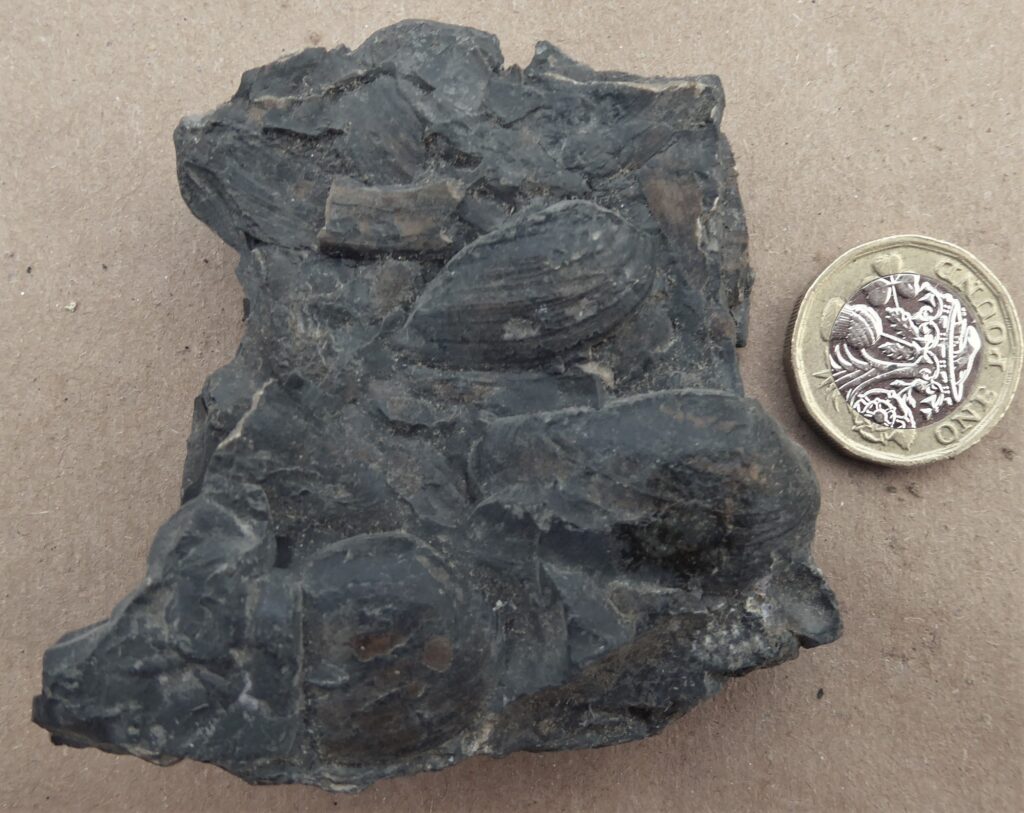
Figure 2 – Carbonicola, a freshwater bivalve
In Permian rocks, a bivalve called Schizodus (Figure 3) was one of the animals that were able to tolerate the high salinity waters of the Zechstein Sea.

Figure 3 – Schizodus, a bivalve that could tolerate high salinity conditions
Goniatites
These extinct animals are related to modern day octopus and squid but differ in that they protected themselves with a coiled shell (Figure 4) that was divided internally into many chambers. The animal only occupied the last chamber and swam using their tentacles or by squirting water out through a tube as a form of jet propulsion. As well as providing protection the shell acted as a flotation chamber making the goniatites a highly mobile group of animals.

Figure 4 – Cancelloceras, a goniatite
Goniatites lived exclusively in a marine environment and were widespread in the sea that surrounded, and occasionally flooded, the Carboniferous deltas and coastal plains.
Plants
Plants are rarely preserved complete, but fossils of their stems, (Figure 5) leaves (Figure 6) and roots (Figure 7) are common.
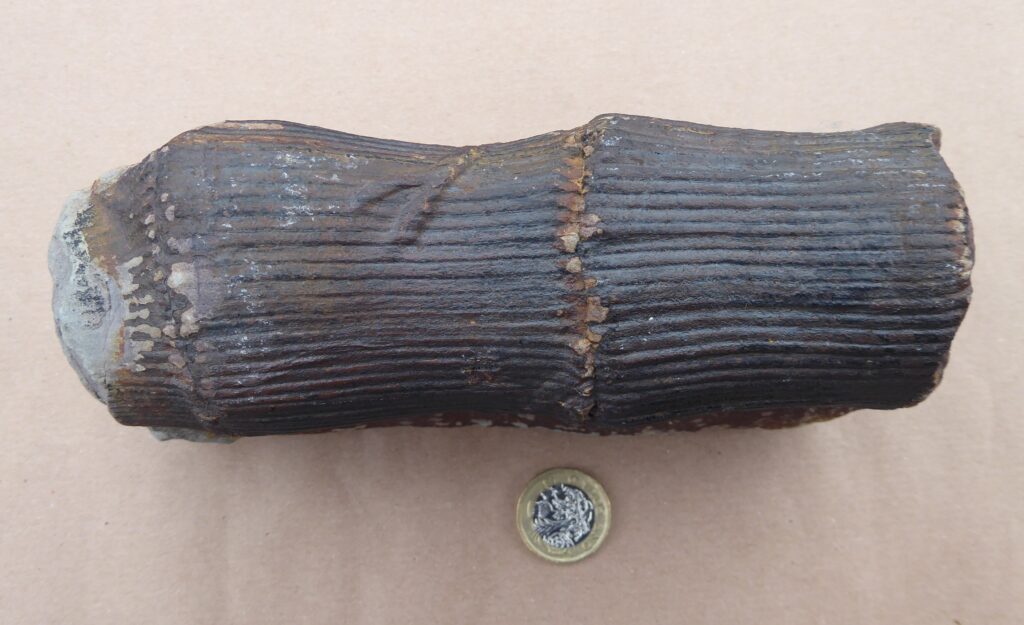
Figure 5 – Calamites, a plant stem

Figure 6 – Alethopteris, a tree fern

Figure 7 – Stigmaria, plant roots
In the hot, wet Carboniferous climate, plants grew rapidly and to large sizes. When they fell into adjacent swamps where oxygen levels were low, they didn’t decompose and became preserved in the sediments that covered them. The plant fossils occur as flattened, carbonised imprints in mudrocks or, in the case of stems and roots, in sandstones, as three dimensional casts.
Microbial Mats
Microbial mats are formed by the activity of micro-organisms, in this case photosynthetic cyanobacteria called Stromatolites that, in certain conditions, can grow on the sea floor, covering it like a mat. The organisms excrete a sticky mucus which attracts fine sediment, causing a build-up of many layered, ‘microbial mats’ of calcareous mud which can form large dome shaped structures (Figure 8).
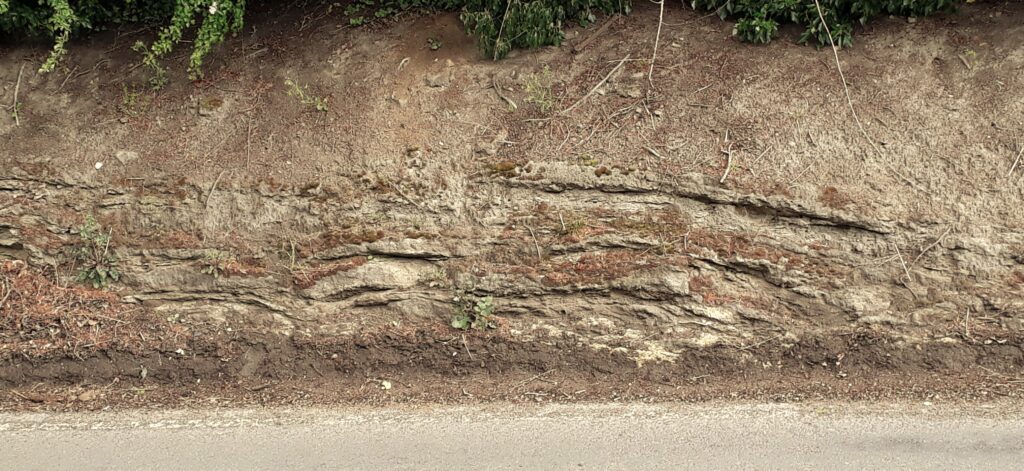
Figure 8 – Stromatolite domes, Aberford
The shallow, warm, saline waters of the Permian Zechstein Sea favoured their development as there were few other animals in the hostile environments to feed on the bacteria.
Trace Fossils
Trace fossils are the marks left by organisms burrowing through or crawling over soft sediments and which have been preserved in rock (Figure 9). These fossils are often created by worms, small crustaceans and gastropods (snails) and are common in Coal Measure Group sandstones.
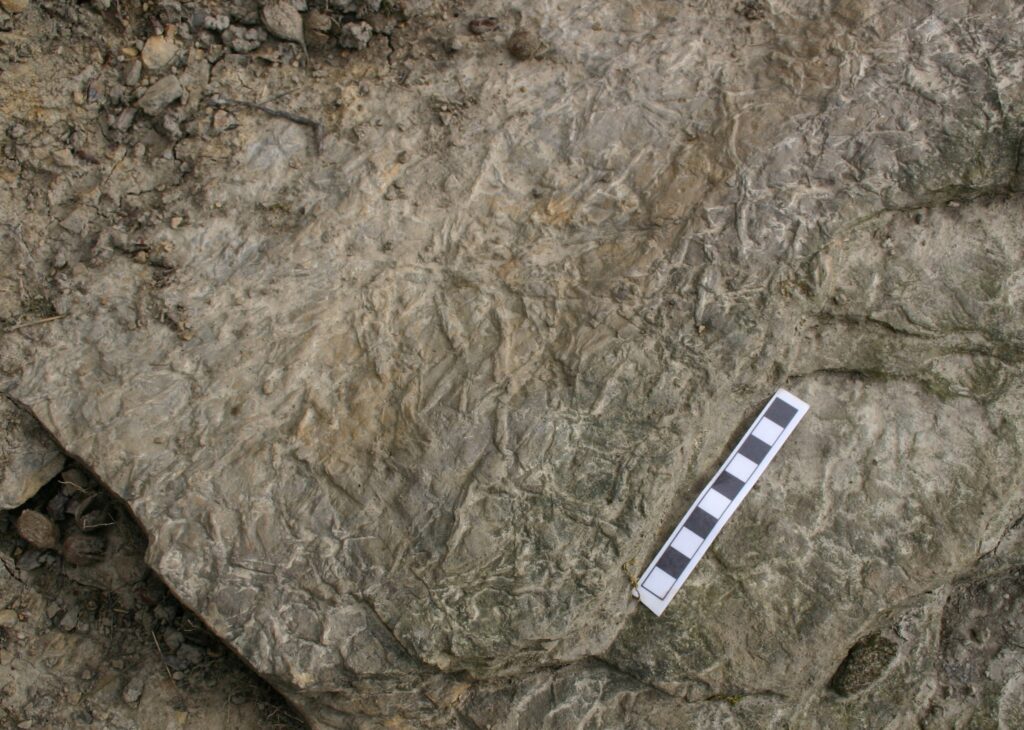
Figure 9 – Burrows made by worms or crustaceans
Vertebrates
Fossils of vertebrates are extremely rare but have been found in the Leeds District. Probably the most famous is the ‘The Leeds Hippo’ (Figure 10) which was discovered on 3rd April 1852 by workmen digging in a brick pit where the Armley Gyratory is today.
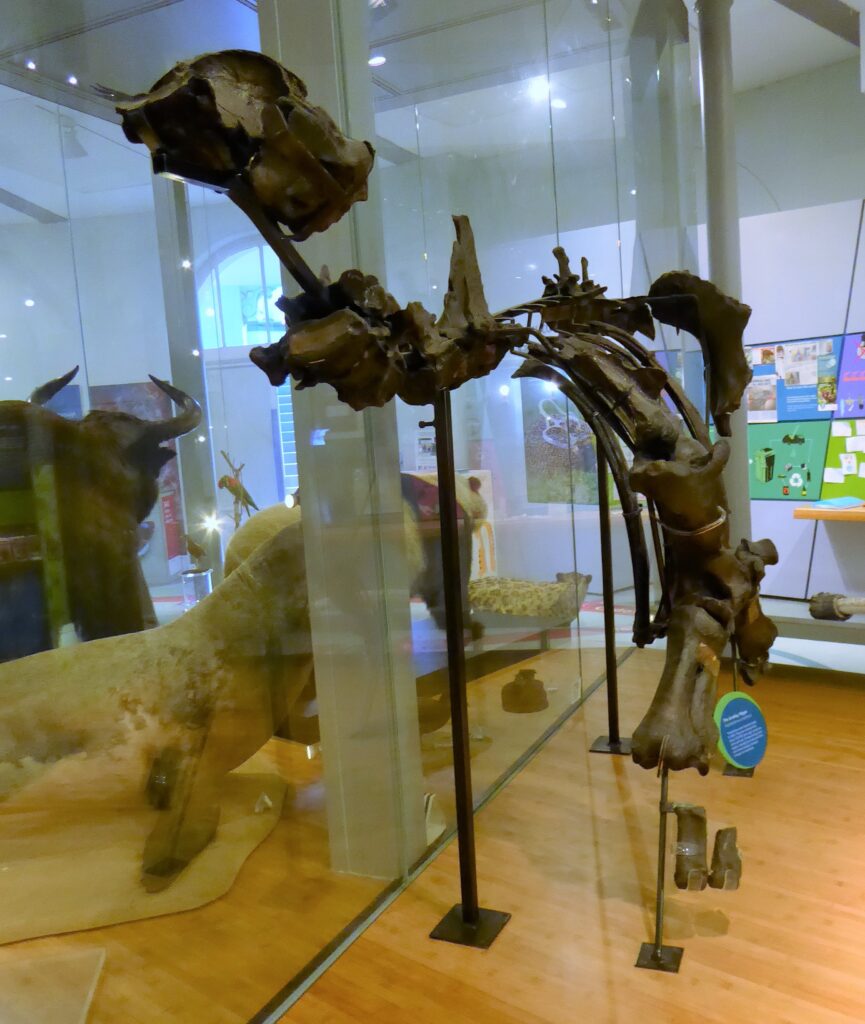
Figure 10 – The Leeds Hippopotamus, City of Leeds Museum
At a depth of 3m, in a dark blue clay of Quaternary age, they found a large number of bones which, due their size, ‘made them think they could not be Christian bones’. They were brought to the attention of the curator of the Leeds Philosophical and Literary Society’s Museum, Mr Henry Denny, who identified them as being from a Northern Hippopotamus. He made further visits to the site and by ‘stimulating the men by the promise of pecuniary reward to increased care and search’ was able to collect many more specimens which included large thigh bones as well as teeth. These enabled him to identify the partial remains of one aged and two adult hippopotami, an elephant and an auroch, an extinct wild ox. Later research was able to establish these as Hippopotamus amphibius, Elephas primigenius and Bos primigenius. As all the bones were recovered within a small area and the fact that some were still articulated, led Denny to conclude that they had lived locally and not travelled far after death.
Mr T.P. Teale, a surgeon at Leeds Infirmary and later to become President of Leeds Philosophical Society, also visited the site and was told by a workman that querns had been found in an adjacent field in a similar deposit which led him to write a paper suggesting the animals had been alive after the last ice age, and possibly during Roman times.
In 1975 one of the hippopotami femurs was carbon dated to establish its actual age. Three different methods were used, and each gave results of around 30,000 years This posed a problem as it placed them as having lived in the latter part of the Devensian, which was the coldest part of the last glacial event when the environment was that of northern Siberia today, and certainly not a place that hippopotami could have survived! The likely cause of this unexpected date is that at the time of the discovery it was common practice to soak bones in gelatine to preserve them. This contaminated the sample with carbon of younger age making the bone appear younger than it was.
To resolve the problem one of the teeth was dated in the hope that material from its centre would not have been contaminated. The same methods were used and these gave an age of 40,000 years, which is the oldest that this technique can provide. From this it is concluded that the bones must be older than 40,000 years and date from the interglacial episode before the last glacial period. This is called the Ipswichian which lasted between 130,000 – 117,000 years and, as the fossils show, was a time when the climate of Leeds was subtropical. The partial remains of one skeleton is displayed at Leeds City Museum.

Figure 11 – Pholiderpeton, Cliffe Castle Museum.
Another rare find was made in 1868 in Toftshaw Colliery near Bradford where the almost complete skeleton of a tetrapod (four legged) amphibian called Pholiderpeton (Figure 11) was discovered in Carboniferous age, Coal Measure Group mudstones. It is one of the earliest known tetrapods in Europe and the fossil, as well as an excellent diorama showing it in its natural environment, can be seen in Cliffe Castle Museum, Keighley.
